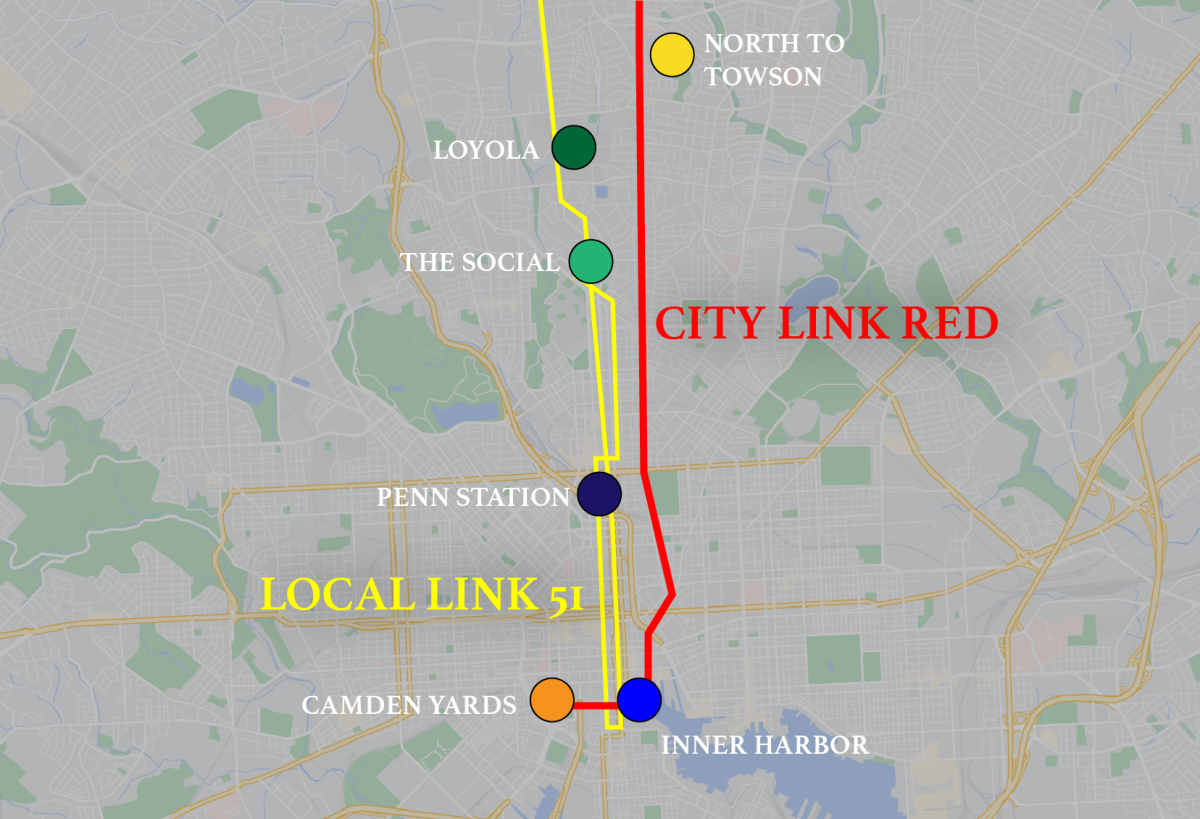If you want to get around Baltimore expect to cough up some serious cash. It’s about $20 one-way in an Uber to get most places in the city, even more if it’s late at night, and you can only split that up so many times before you run out of seats. Depending on how often you go into the city, Uber could cost you hundreds of dollars a semester. You might be tempted to bring your car onto campus but there is gas to worry about and a $500 parking fee.
Even with the expense, going out to the city is a necessary part of student life, with groceries, errands, social lives, and many more reasons a student may want to leave campus. Besides Uber and personal vehicles, however, there is also the bus and transit system of Baltimore. At only $2 per ticket for a one-way fare, it’s easily the cheapest method to get around Baltimore, yet it remains underused.
Some Loyola students may be concerned with the practicalities of using the bus when most of their friends use Uber. Allesandra Arvelo ‘25 felt that very few other students at Loyola used the buses and that she lacked the information needed to properly make use of them.
She said, “If other people did it I would do it too, but the fact that no one is doing it… I’m not going to jump on a bus by myself when I don’t know where I’m going or when it’s coming.”
Arvelo is a transfer student at Loyola and she leaves campus at least once every weekend. Before she transferred, she would regularly use public transportation, but now mostly Ubers around the city or gets in a friend’s car when she can.
Arvelo said, “I’m a transfer and I used public transportation in Philadelphia all the time but here it’s like everyone jumps in an Uber and I just joined.”
Even for those students who want to use the bus, there are still concerns and questions of safety. With little to no information about the local transit system provided by Loyola to students, gauging things like safety can be difficult for students.
Deputy Director of Marketing Linda Eby of the Maryland Transit Administration, MTA, however, said this should not be a concern for students.
“MTA has been recognized as the #1 safest transit system in the US for seven years in a row,” she said.
Additionally, she acknowledged that Uber’s “on demand” service cannot be matched by the bus or other public transit as the buses advantages lie elsewhere.
Eby said, “Public transportation is an affordable means to travel and explore all that Baltimore has to offer whether by bus, light rail, or metro subway service. Students should take transit because it is a climate friendly choice.”
Increased student use would also likely increase the quality of the bus. There would be potential for increased frequency of the bus routes around Loyola to accommodate the use, and Loyola could choose to enroll in a program currently available to it for its students to receive student discount cards. There also would be less reason for concern from students about being the only student using the bus on a given trip.
Whether or not the pros of using the bus outweigh its cons is a personal decision, but if you decide that you want to use it there is some important information you need. To buy tickets, not only for the bus but also the metro and light rail, you need the “CharmPass” app, and the “Transit” app to see live maps and bus times. Both are available on both the App Store and Google Play Store. In addition to the $2 one way fare, there is a $4.60 day pass available which is helpful if you need to make a transfer.
Some useful routes around Loyola are LocalLink 51 and CityLink Red. LocalLink 51’s stop is on North Charles Street at the intersection with Cold Spring Lane, connecting to the Inner Harbor, The Social, Camden Yards, and Baltimore Penn Station, which in turn connects to the airport. CityLink Red connects the Inner Harbor to Towson and the Towson Mall, also stopping by Loyola’s York Road parking lot. Other useful routes can be found on the transit map website.







































































































